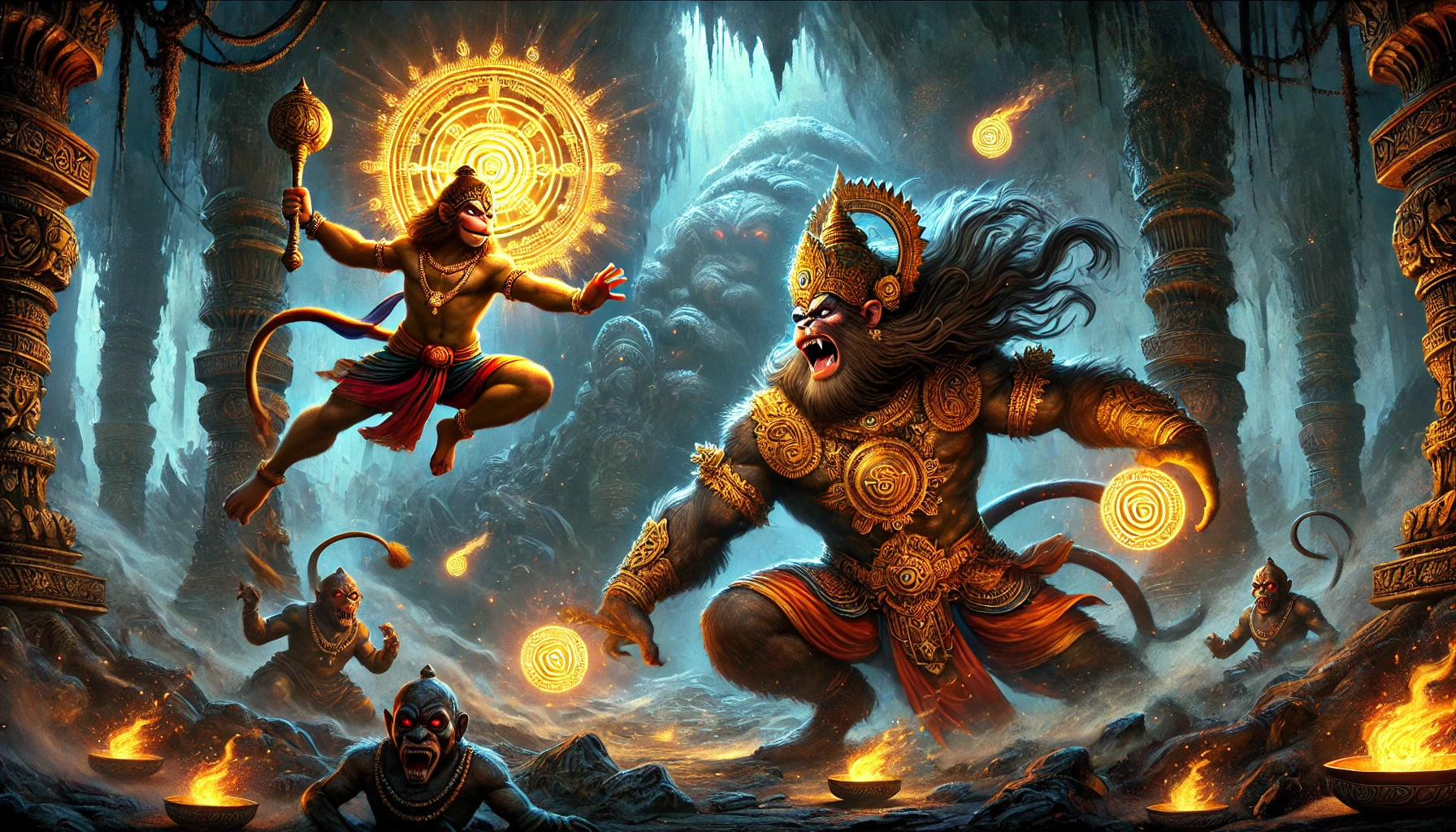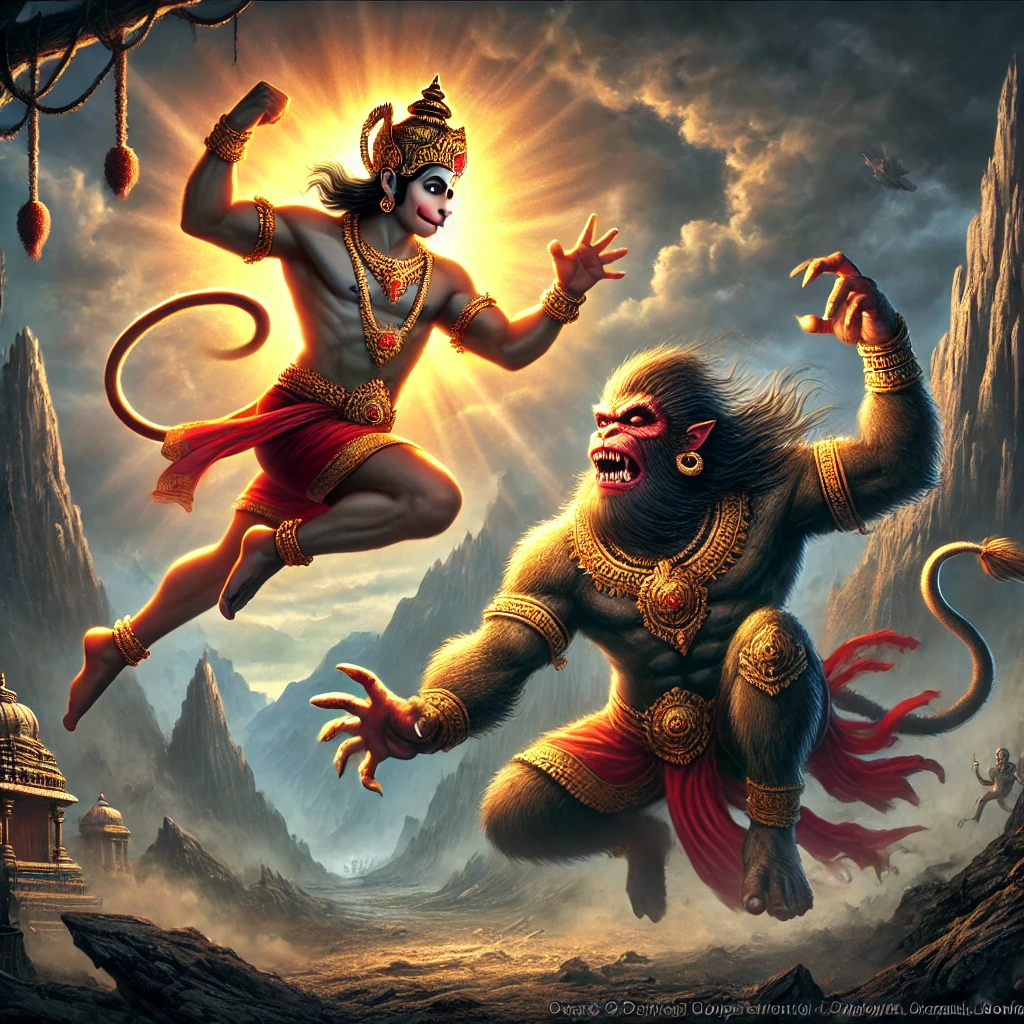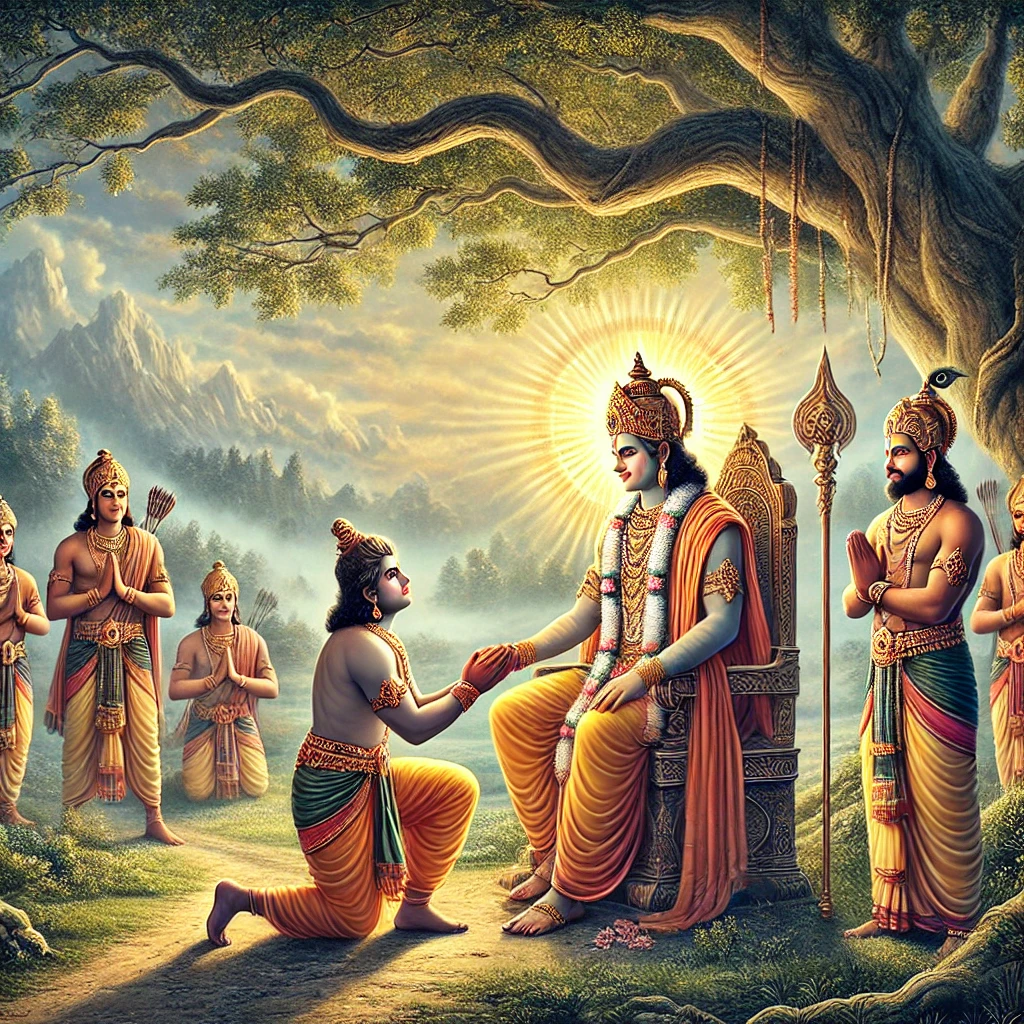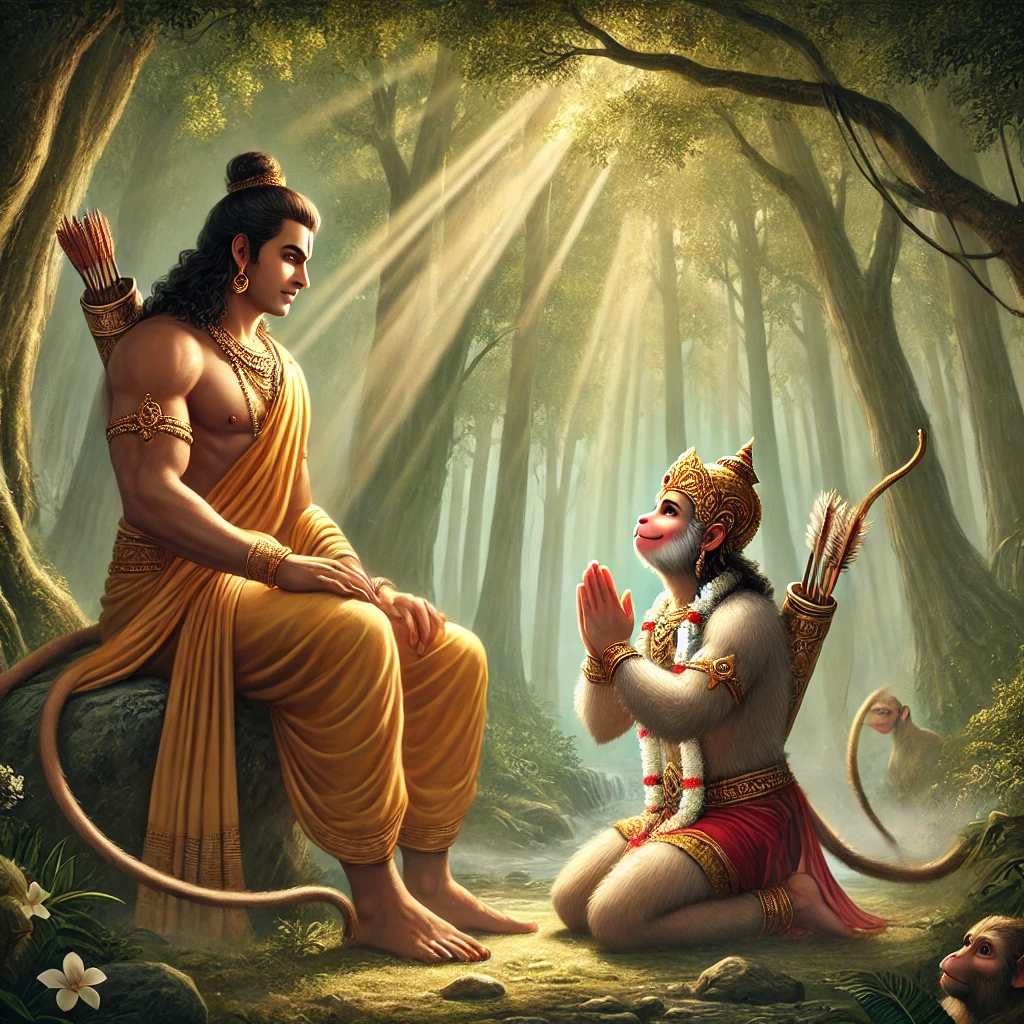Table of Contents
Introduction
Namaste and welcome to Bedesii.com, where we journey into the depths of Hindu mythology and spirituality to uncover stories that inspire, teach, and guide us on the path of wisdom and devotion.
Today, we bring you an extraordinary tale from the Ramayana—a story that resonates with the timeless virtues of courage, devotion, and the triumph of good over evil. It is the story of Panchmukhi Hanuman, a divine form of Lord Hanuman that reveals the mystical aspects of his immense power and unwavering loyalty to Lord Rama.
This narrative is not just an account of valor but a rich tapestry of spiritual symbolism, highlighting the divine attributes that make Hanuman a beloved deity and protector. Whether you seek inspiration for overcoming life’s challenges or a deeper understanding of Hindu mythology, this story has something for everyone.
So, settle in, and let’s embark on this fascinating journey into the realm of Paatal Lok, where the loyal Hanuman transforms into his five-faced form to defeat darkness and rescue his lord. Through this tale, we will uncover the profound lessons and universal truths that continue to inspire devotees across generations.
Let’s dive in!
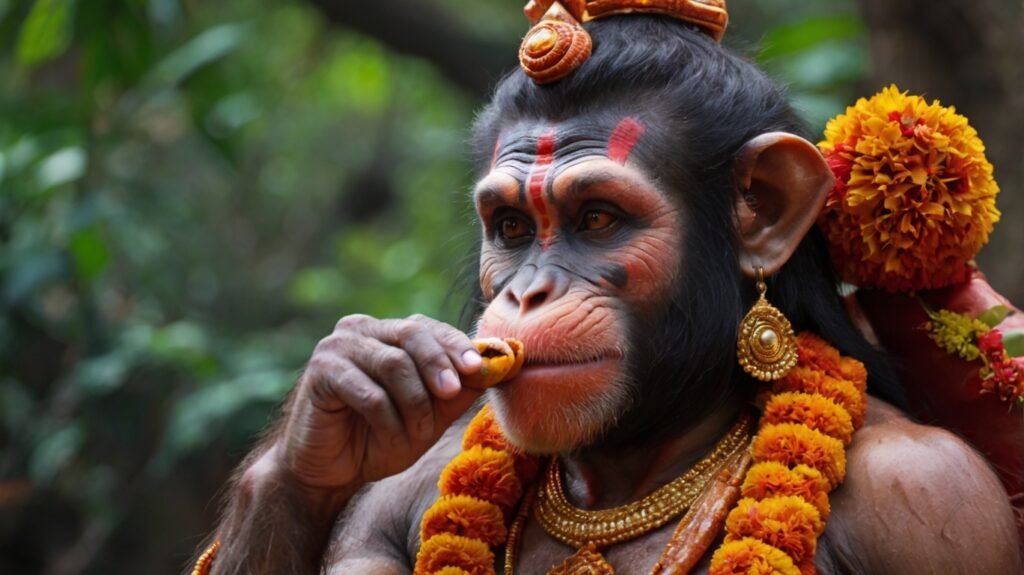
Panchmukhi Hanuman
The story of Panchmukhi Hanuman is a fascinating and profound episode from Hindu mythology, primarily rooted in the epic Ramayana. This tale not only showcases Hanuman’s unwavering devotion and unparalleled strength but also introduces the mysticism and spiritual symbolism of his five-faced form, a manifestation of divine energy and purpose. Below is an enriched exploration of the story, its significance, and its relevance in the spiritual realm.
The Ramayana: The Backdrop of the Legend
The Ramayana, an ancient Indian epic composed by sage Valmiki, revolves around the life of Lord Rama, his consort Sita, and his devoted aide, Hanuman. The epic narrates Lord Rama’s quest to rescue Sita from the clutches of the demon king Ravana. Among the countless acts of heroism, Hanuman’s loyalty and unparalleled feats of strength emerge as a cornerstone of this divine saga.
The Emergence of Ahiravana
Amid the climactic war between Lord Rama’s army and Ravana’s forces, Ravana turned to his brother Ahiravana, the ruler of the netherworld Paatal Lok, for assistance. Ahiravana was a master of dark magic and deceit. Determined to turn the tide of war, he devised a plan to abduct Rama and his brother Lakshmana, thereby crippling the leadership of the Vanara army.
Using his magical abilities, Ahiravana disguised himself as Vibhishana, Ravana’s virtuous brother who had allied with Rama. Deceptively gaining access to Rama’s camp, Ahiravana cast a spell to put Rama and Lakshmana into a deep slumber. He then transported them to his underground kingdom, intending to sacrifice them to the goddess Mahamaya.
Hanuman’s Resolve
Upon discovering the disappearance of Rama and Lakshmana, Hanuman’s sharp instincts alerted him to the treachery. Guided by his unparalleled devotion and a deep sense of responsibility, he sought the real Vibhishana for guidance. Vibhishana revealed the identity of Ahiravana and his sinister intentions. Without hesitation, Hanuman embarked on a perilous journey to Paatal Lok to rescue his beloved Lord.
The Challenges in Paatal Lok
As Hanuman entered the dark, foreboding realm of Paatal Lok, he encountered formidable challenges. Demonic sentinels and mystical barriers sought to thwart his mission, but his divine strength and strategic mind proved invincible.
It was here that Hanuman encountered Chandrasena, a celestial being who revealed Ahiravana’s secret: his life force was tied to five lamps burning in five different directions—north, south, east, west, and upwards. All the lamps had to be extinguished simultaneously to defeat him, as even one remaining lit would ensure his invulnerability.
The Birth of Panchmukhi Hanuman
Faced with this daunting task, Hanuman invoked his divine powers, transforming into Panchmukhi Hanuman—a five-faced manifestation embodying the energies of different deities. Each face of Panchmukhi Hanuman symbolized a unique aspect of divinity:
1. Hanuman (East-Facing): Representing strength, valor, and unwavering devotion to Lord Rama.
2. Narasimha (South-Facing): Symbolizing protection and ferocity in eliminating evil.
3. Garuda (West-Facing): Embodying fearlessness and the power to liberate from curses and troubles.
4. Varaha (North-Facing): Representing stability, earthliness, and grounding.
5. Hayagriva (Upward-Facing): Signifying wisdom, knowledge, and spiritual enlightenment.
With this form, Hanuman’s vision and power expanded in all directions, enabling him to simultaneously extinguish the five lamps using his might and divine abilities.
The Defeat of Ahiravana
In his Panchmukhi form, Hanuman launched a fierce attack on Ahiravana. The demon king, though skilled in dark magic, was overwhelmed by the divine energy emanating from Hanuman. In a single, swift move, Hanuman extinguished all five lamps, breaking Ahiravana’s source of power and slaying him. This act not only vanquished a formidable foe but also cemented Hanuman’s role as the ultimate protector.
Rescuing Rama and Lakshmana
With Ahiravana defeated, Hanuman located the captive Rama and Lakshmana. Using his immense strength and speed, he carried them back to Lanka, restoring hope and momentum to the ongoing war. Lord Rama praised Hanuman for his bravery, devotion, and quick thinking, reiterating his indispensability in the divine mission.
Symbolism of Panchmukhi Hanuman
The story of Panchmukhi Hanuman is rich in symbolism and spiritual lessons:
1. Integration of Divine Qualities: The five faces symbolize the integration of strength, wisdom, protection, speed, and stability—qualities essential for overcoming life’s challenges.
2. Triumph of Good Over Evil: The defeat of Ahiravana signifies that no matter how powerful darkness may seem, light and devotion will always prevail.
3. Faith and Devotion: Hanuman’s transformation is a testament to the power of unwavering faith and dedication in achieving the impossible.
4. Strategic Thinking: The narrative emphasizes the importance of strategy and foresight, alongside strength and courage, in resolving conflicts.
FAQ
1. Was Ahiravan the son of Ravana?
Ahiravan is not the son of Ravana; he is described as the brother of Ravana in various texts, including the Krittivasi Ramayana and other adaptations of the Ramayana.
2. How was Ahiravan killed by Hanuman?
Ahiravan was killed by Hanuman during a fierce confrontation in Paatal Lok. Hanuman transformed into his Panchmukhi form, which allowed him to extinguish five lamps simultaneously that were crucial for Ahiravan’s survival. With the lamps extinguished, Ahiravan lost his power, leading to his defeat .
3. Who is the father of Ahiravan?
The father of Ahiravan is not explicitly mentioned in most texts, but he is often associated with the lineage of Ravana. In some interpretations, he may be considered part of the same demon lineage as Ravana without a specific mention of his father.
4. What is the relationship between Ahiravan and Ravana?
Ahiravan is Ravana’s brother. He ruled Paatal Lok and was known for his mastery of dark magic and illusion, which he used to assist Ravana during the war against Rama .

